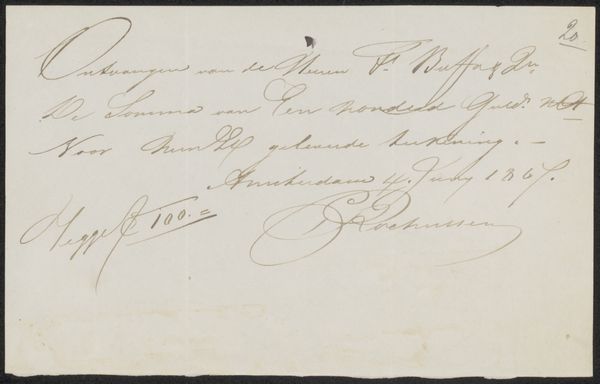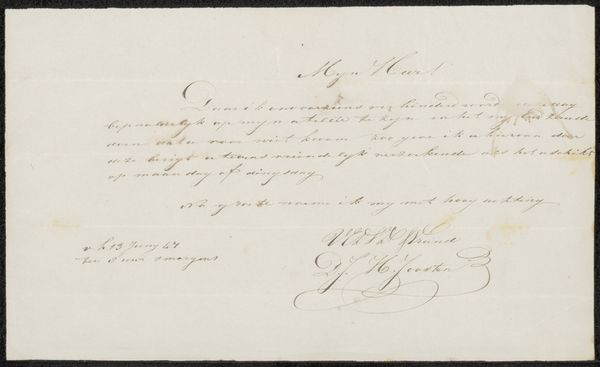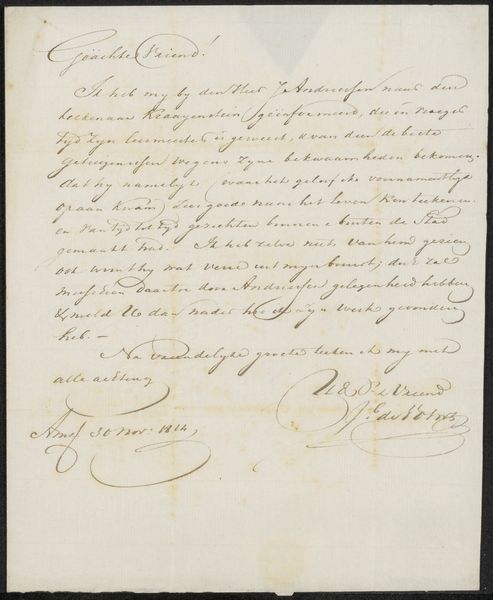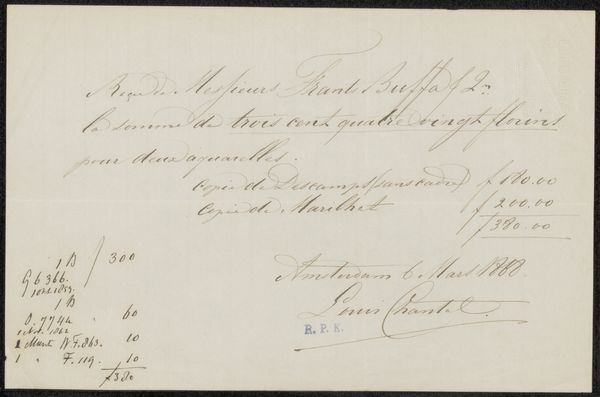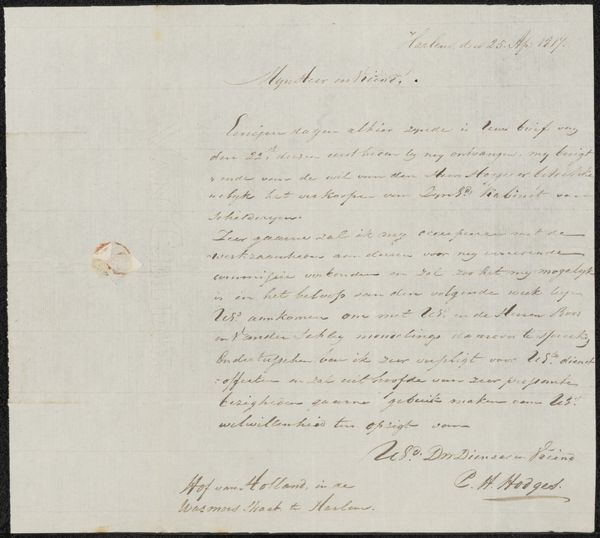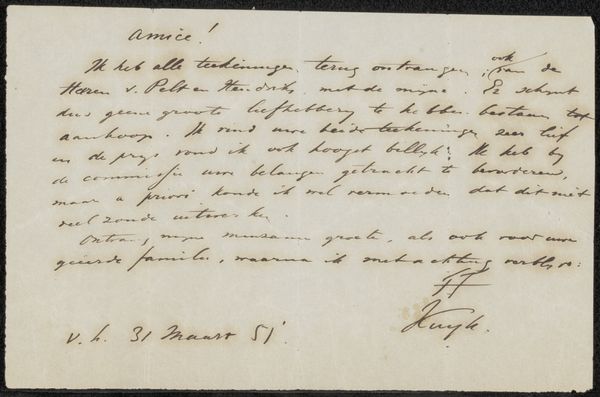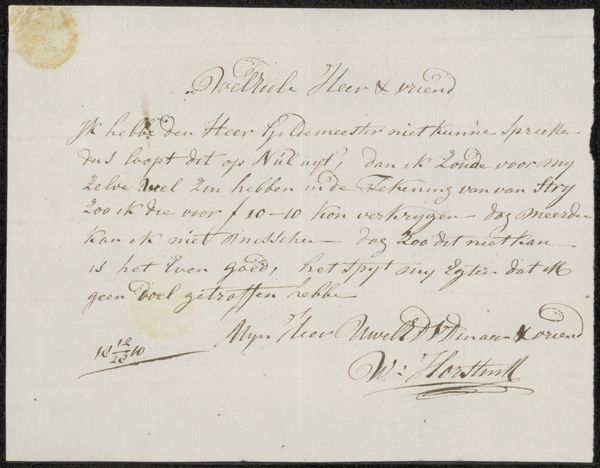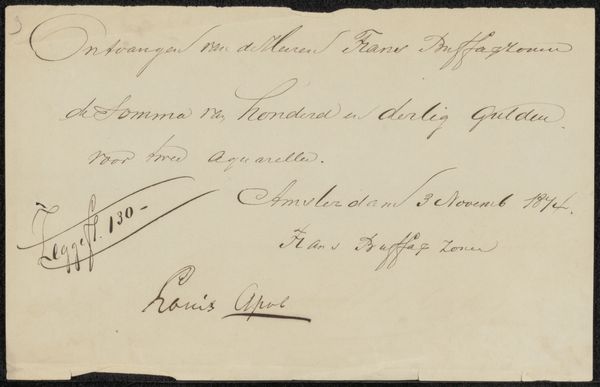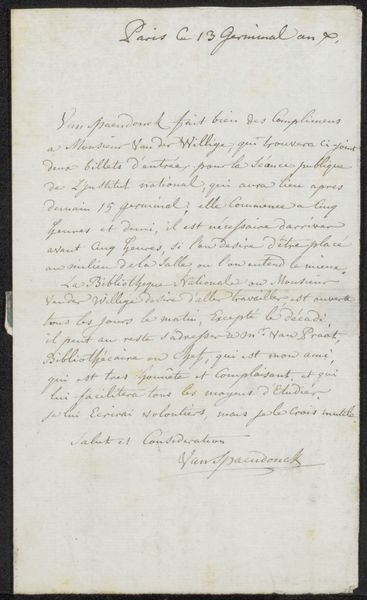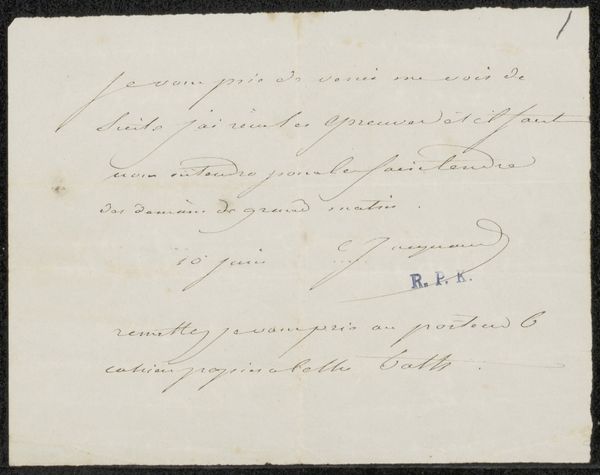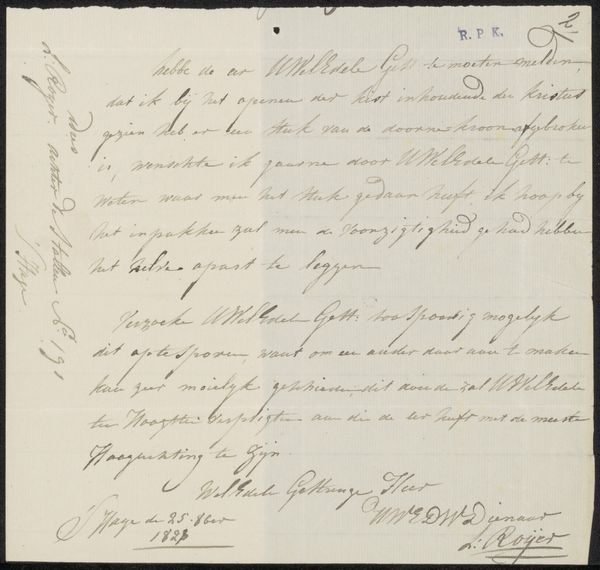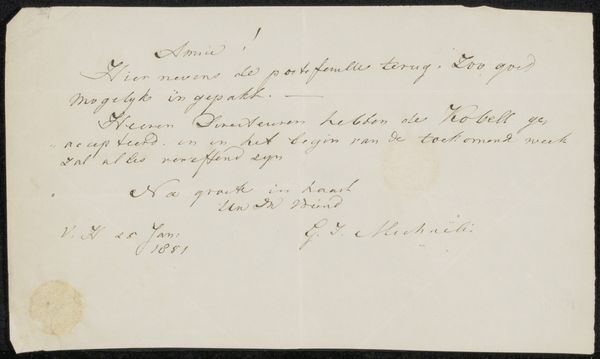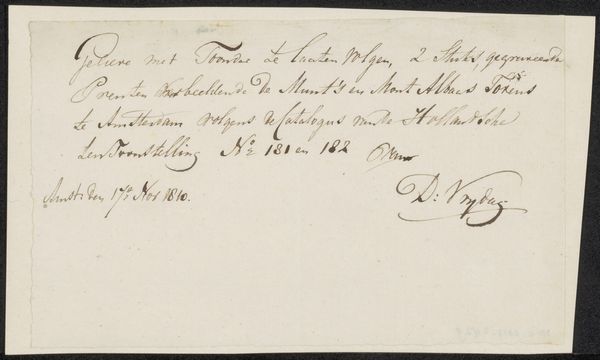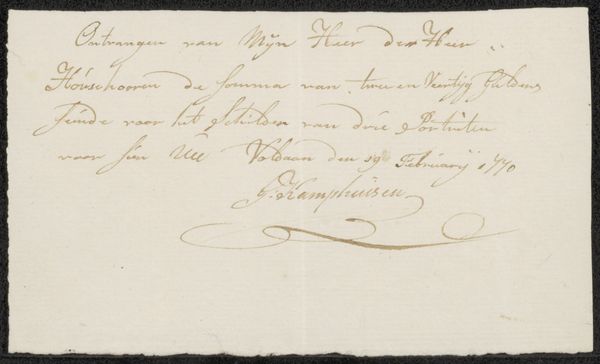
drawing, paper, ink, pen
#
drawing
#
paper
#
ink
#
romanticism
#
pen
Copyright: Rijks Museum: Open Domain
Editor: Here we have Eugène Verboeckhoven’s "Echtheidsverklaring bij een schilderij," potentially from 1842 or 1843. It's ink on paper, and it seems to be a handwritten statement of authenticity. What do you make of its materiality and purpose? Curator: As a materialist, I'm fascinated by what this document tells us about the art market of the time. It's not just about aesthetics; it's about the validation and commodification of art. The paper itself, the type of ink used, the act of writing—all these contribute to the construction of value and authenticity. What kind of labour does it evidence? Editor: I guess the artist's, and perhaps that of a paper maker? Is that relevant here, considering this artwork contains only text? Curator: Absolutely. The act of physically writing a statement connects Verboeckhoven directly to his product, adding another layer of authority beyond just his name. Consider the social context: handwritten authentication implies a personal guarantee in a period lacking today's standardized systems of verification. How does the document perform its labour? Editor: That’s a really interesting perspective. So instead of simply seeing a document, we should look at how its materiality reinforces Verboeckhoven's agency within the art world of his time? Curator: Precisely. Think about it as performative labor, a tangible declaration shaping the artwork's value. It is less about aesthetic qualities of visual representation, and more about economic systems in the mid 19th century. It opens up how materiality and validation intertwine to contribute to value and influence perceptions in the art market. Editor: I never would have considered how the materials themselves become part of the narrative! Curator: That’s the essence of the materialist approach: understanding how production and consumption create layers of meaning in art.
Comments
No comments
Be the first to comment and join the conversation on the ultimate creative platform.
